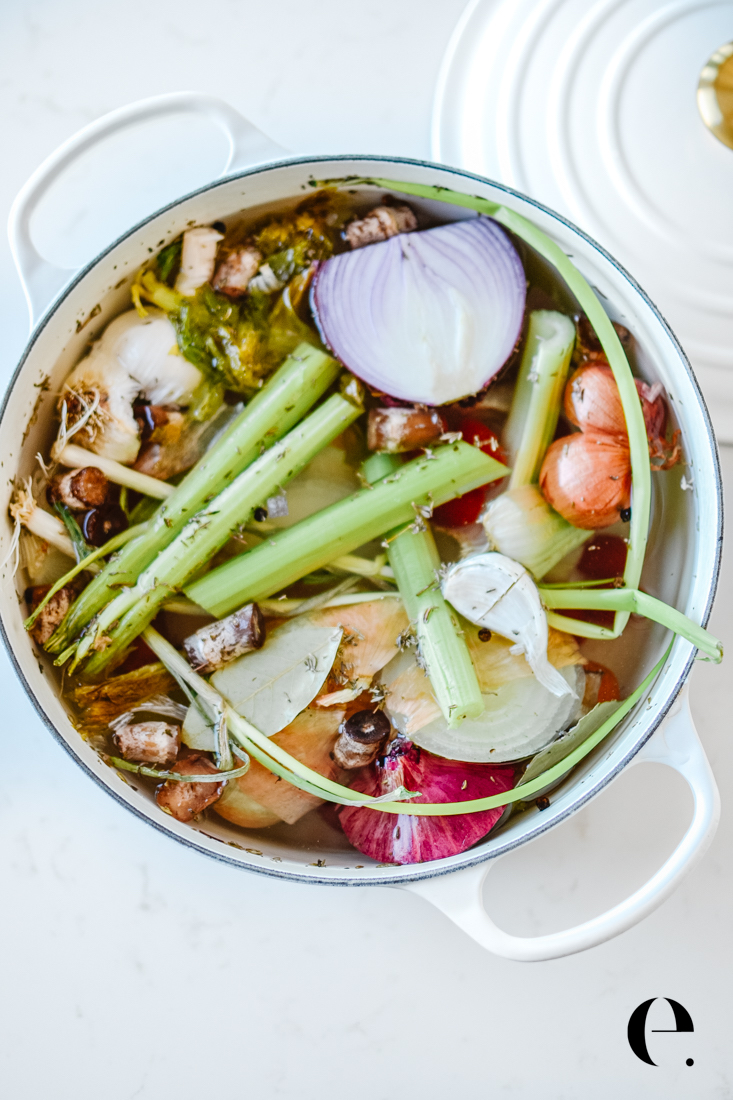
Once you learn how easy it is to make this homemade vegetable stock recipe from scraps, you’ll wonder why you didn’t start making your own veggie stock years ago!
Not only is homemade vegetable stock super easy to make and nutritious, but it can also be a great way to save money and use every last bit of the vegetables you buy.
Save Money: How To Make Vegetable Stock from Scraps
Watch the video below to see the full tutorial to make this vegetable stock recipe from scraps (just wait until the ad is done—those keep this site and my recipes free!).
Saving the ends of onions, carrots, and celery stalks in a freezer bag will help you make the most use out of the vegetables you pay for.
Are your carrots or celery looking a little limp or seeming like they might go bad? Throw them in the bag. Once it’s full, simmer your stock to make a beautiful vegetable stock that you can use in just about any soup or sauce.
No Veggie Scraps? No Problem
If you don’t have any scraps, you can still follow the vegetable stock recipe below. Consider using the scrap method in the future if it works for you. Grab some onions, carrots, celery, mushroom stems (optional), a tomato (optional), plus some herbs and bay leaves, and you’re good to go.
Homemade Vegetable Stock Recipe Ingredients
As I mentioned, it’s fine to use mostly scraps to make veggie stock; you don’t necessarily need to buy all of these things just for the stock.
What vegetables should you use for vegetable stock? Use vegetables like onions, carrots, mushrooms, and tomatoes for vegetable stock. The traditional base is carrots, celery, and onion. From there, add aromatic herbs and spices to give it a well-rounded flavor.
If you’re allergic or don’t care for any of these items, just leave them out—veggie stock is super flexible.
- Onions and similar things such as shallots or scallions (a.k.a. green onions)
- Carrots
- Celery
- Garlic
- Bay leaf
- Mushroom stems or leftover mushrooms
- Tomatoes
- Fresh herbs such as sprigs of fresh thyme, rosemary, parsley, herb fennel, or dill. I especially love using leftover parsley stem. Use 2 teaspoons total dried herbs if you don’t have any fresh on hand.
- Whole black peppercorns. Whole, instead of ground, peppercorns generally yield better flavor in stock without the black pepper bits getting through the strainer.
- Optional: some people like red, yellow, or orange bell pepper, so add those vegetable scraps if you like the flavor. (I don’t love bell pepper in veggie stock). Avoid green bell pepper as it can turn bitter, and avoid the white inside, or pith, of bell peppers as it can turn bitter as well.
How to Not Ruin Your Stock
Remember that your stock will take on the flavor profile of whatever you add to it. Onion, large carrots, and celery are good ingredients to base your stock on. From there, add things like a garlic clove or two, mushroom steps, one or two types of herbs, and perhaps some tomatoes.
If you add 4-5 different types of herbs, the flavors may not go together well. For example, I love thyme as a staple in my veggie stock and homemade chicken stock, but leave it out if you don’t love it. You’re making a custom umami flavor, so tailor it to your taste.
Too many garlic cloves can also be overpowering, so use just a clove or 2, or omit it altogether if you prefer. Some people like to throw in turnips, leeks, and parsnips as well.
Things to Avoid in Homemade Vegetable Stock
While this vegetable stock recipe is very flexible, some things will completely change the flavor of this delicious base. What should you NOT put in vegetable stock? Here are items you should not put in vegetable stock:
- Cruciferous vegetables. These include cauliflower, cabbage, kale, garden cress, bok choy, broccoli, Brussels sprouts, and similar green leafy vegetables. Cruciferous veggies can make your vegetable stock recipe turn out bitter.
- Beets. Avoid beets unless you want your stock to have a powerful beet flavor and turn bright pink.
- Potatoes, sweet potatoes, or any other starchy veggie. The starch in these ingredients can make your stock gummy (but a few potato scraps can make add a little viscosity if you like that texture; I generally do not add them)
- Hot peppers. The heat can concentrate too much and the inside pith of peppers can turn bitter.
- Citrus. Citrus fruits like orange or lime can turn bitter over time in stock—but a fresh squeeze of lemon into your stock right before using it adds wonderful flavor and some extra vitamin C. Just don’t simmer it for hours!
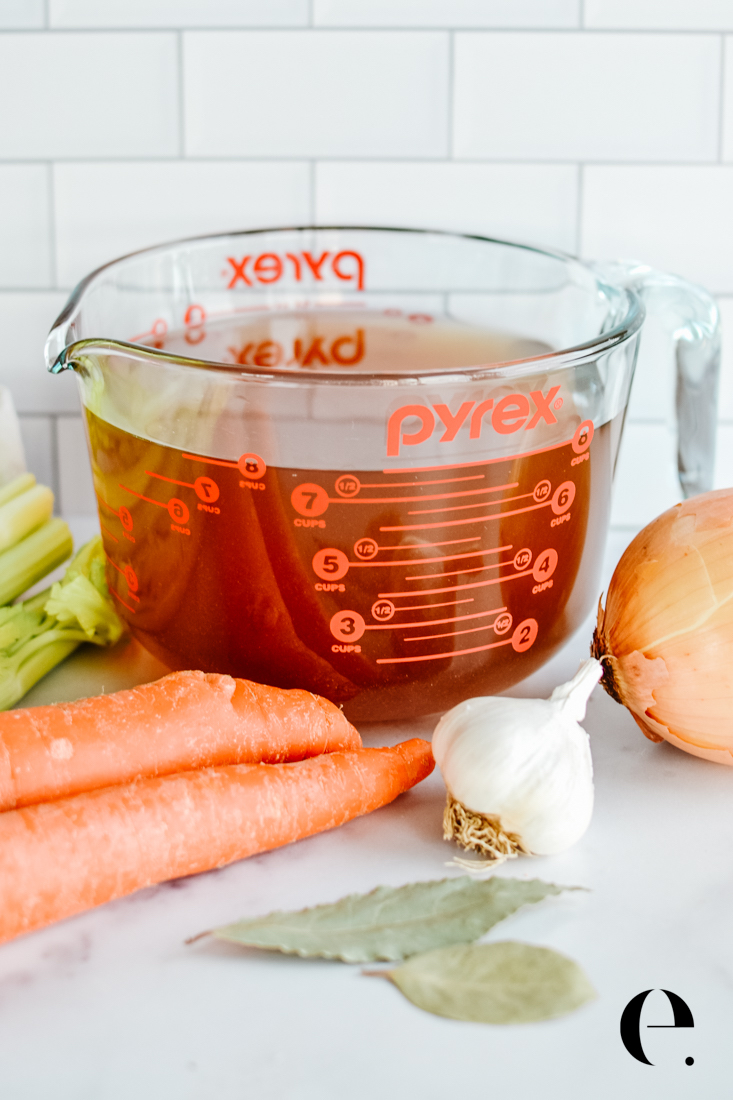
How To Make Vegetable Stock
How do you make your own stock? You can make your own stock in 4 easy steps:
- Fill a large stock pot with veggie scraps (or veggies you just bought if needed), and fill the pot with cold water to about two inches below the pot.
- Bring to a boil, then reduce to a simmer.
- Cover and simmer for 4 hours.
- Strain and use or save for later.
You can read and print the full recipe below. I mean, just look at that rich golden color!
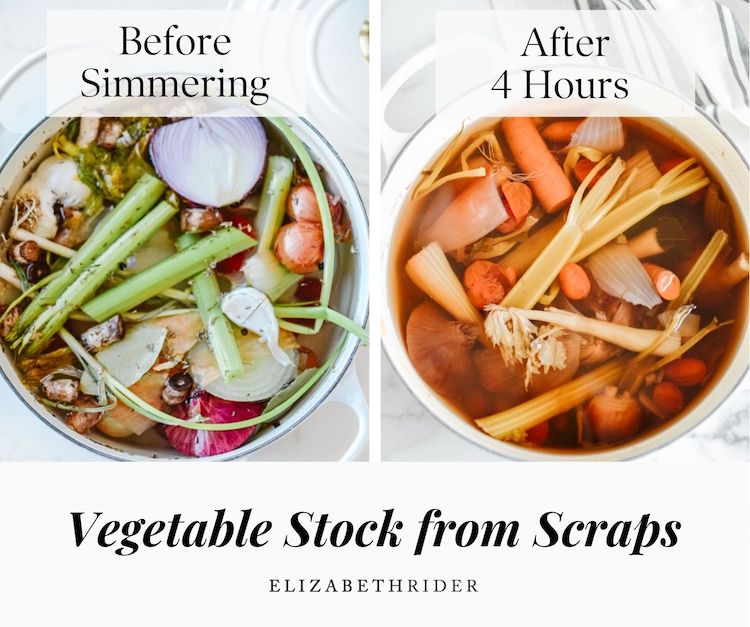
How To Use Vegetable Stock
Veggie stock can be used as a base for soups and to add great flavor to cooked grains. You can use it as a substitute in any soup recipe that calls for water or chicken stock—it has way more flavor than water.
Veggie stock can be used as a vegan substitute in a soup recipe that calls for chicken stock. Use it as the cooking liquid for any grain—it’s terrific as the base of risotto (or any rice) and quinoa, too. Veggie stock is naturally gluten-free and full of nutrients.
Vegetable stock from scraps can add a great boost of calcium, vitamin A, potassium, and more, just by using what you have on hand in the kitchen. You can try it in one of my vegetable soup recipes, use it to flavor some delicious orzo, or add flavor to Instant Pot Chicken.
Print
Vegetable Stock Recipe from Scraps
- Prep Time: 10 mins
- Cook Time: 4 hours
- Total Time: 4 hours 10 minutes
- Yield: 4 quarts 1x
- Category: Soup
- Method: Simmer
- Cuisine: American
Description
This flexible vegetable stock recipe saves you money by using scraps that you’ve saved from onions, carrots, celery, and mushrooms to make a glorious stock. No problem if you don’t have scraps, simply grab the ingredients listed below and simmer your stock for a few hours.
Watch the video above for more tips & tricks. If you make it, please leave a star rating in the comments to help other readers in our community.
Ingredients
- Any leftover veggie scraps from the month from celery, carrots, and onion in the freezer, adjusting proportions below to factor in any scraps you already have
- 1–2 onions, halved
- 3–4 carrots, halved or chopped to fit
- 3–4 celery ribs, chopped to fit
- 2–4 garlic cloves, halved or smashed open
- About 10 mushroom stems (optional, more or less depending on what you have)
- A few handfuls total of fresh herbs (choose one or two types) such as thyme, rosemary, parsley, or dill (if no fresh herbs are available, swap for 1-2 teaspoons dried herbs)
- A handful of leftover tomatoes, cut in half (optional)
- 1 dried (or 2 fresh) bay leaves
- 1 teaspoon whole black peppercorns
- 2 teaspoons sea salt, more or less to taste
Instructions
- Remove any dirt or produce stickers from veggies, but no need to peel or chop anything. Just half anything that is whole to create some surface area and to fit in the stockpot.
- Add all ingredients to a 5-6 quart pot. Cover with (preferably filtered) water by 2 inches, leaving an inch or two below the top of the pot so it doesn’t boil over. Cover, bring to a boil at high heat, and then reduce to a rolling simmer for 2-4 hours.
- Strain the stock through a fine-mesh strainer and discard scraps.
- Use immediately, or refrigerate for up to 5 days. Or, freeze up to 5 months in freezer-safe containers.
Notes
- Ingredients. Think of veggie stock as a way to get the most out of vegetable scraps and/or vegetables that look like they might go bad. Always save the ends of onions, carrots, celery, and mushroom stems in a freezer bag. By the end of the month, you’ll have a big bag of frozen veggie scraps to add to a pot. Veggie stock is extremely flexible; use what you have. You also will want to add aromatic herbs like fresh parsley, thyme, and rosemary.
- Use: Onions, shallots, or green onions, carrots, and celery scraps. Mushroom stems. Bell pepper scraps are also lovely in stock if you like their taste; just avoid the white pith part inside.
- Avoid: Cruciferous vegetables (e.g., broccoli, cabbage, cauliflower), all greens (e.g., kale, chard), and green bell pepper in veggie stock. These veggies tend to make the stock taste bitter. Avoid starchy root veggies such as sweet potatoes, as they can make your stock gummy. A few potato peels can add a nice viscosity to stock if you like the texture, but avoid whole potatoes. Avoid hot peppers in stock as the heat can concentrate too much.
Nutrition
- Calories: 13
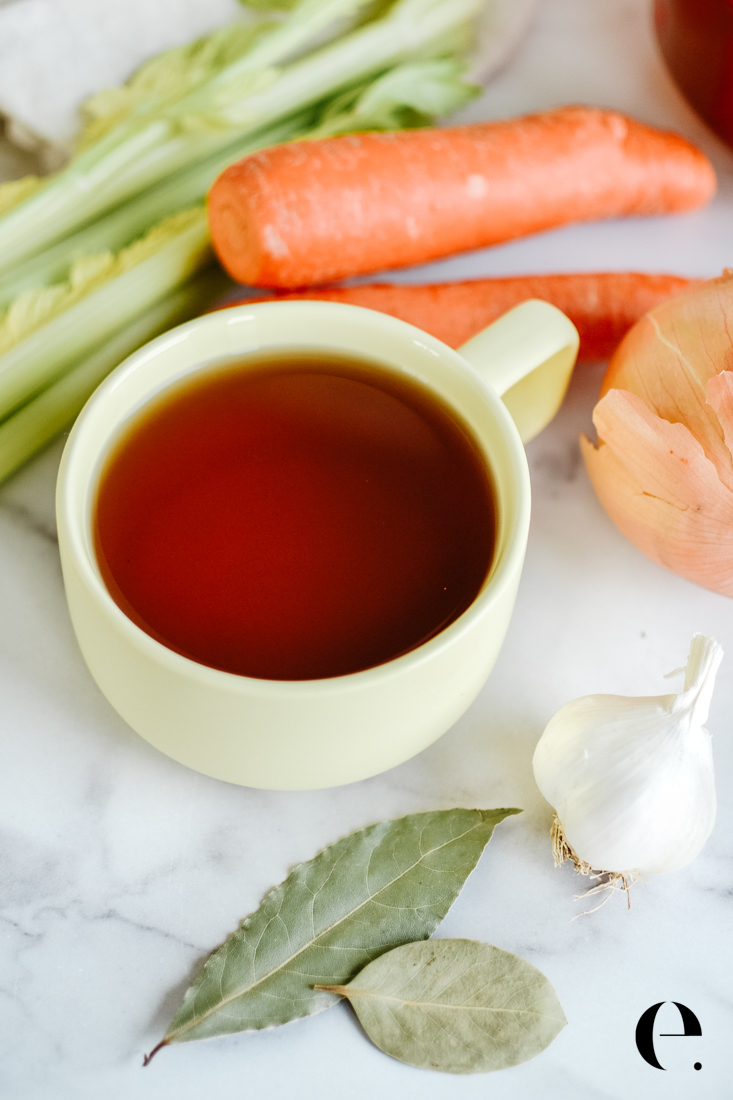
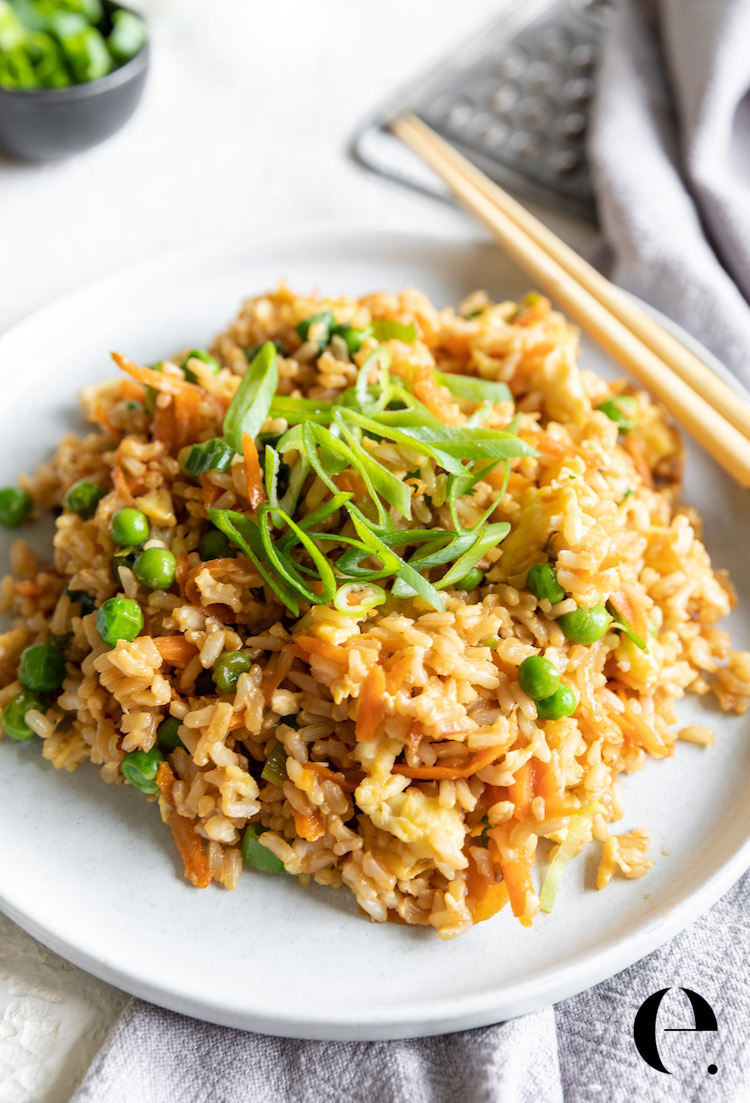
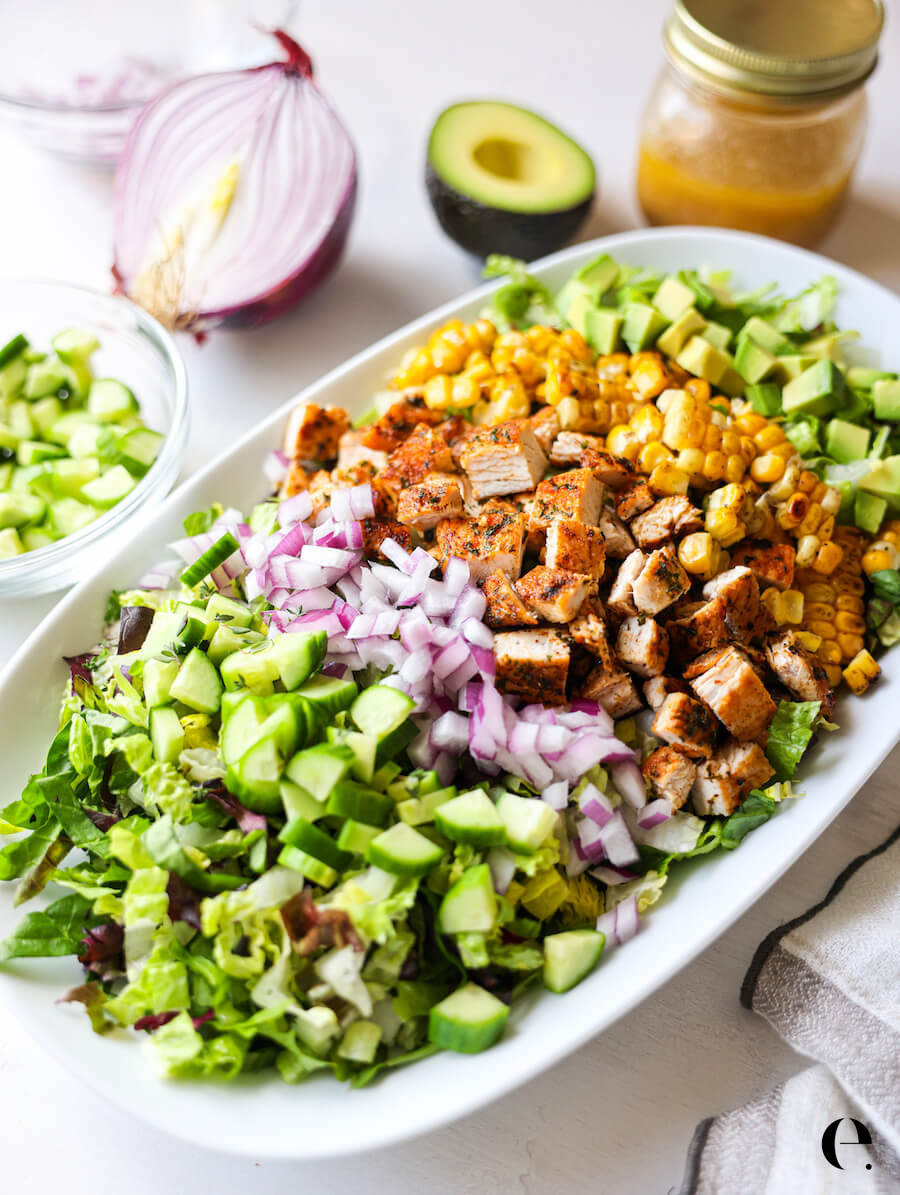

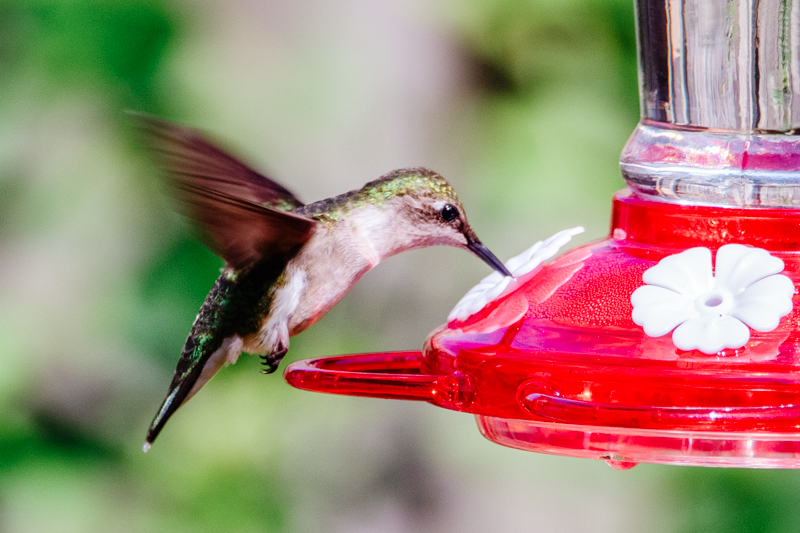

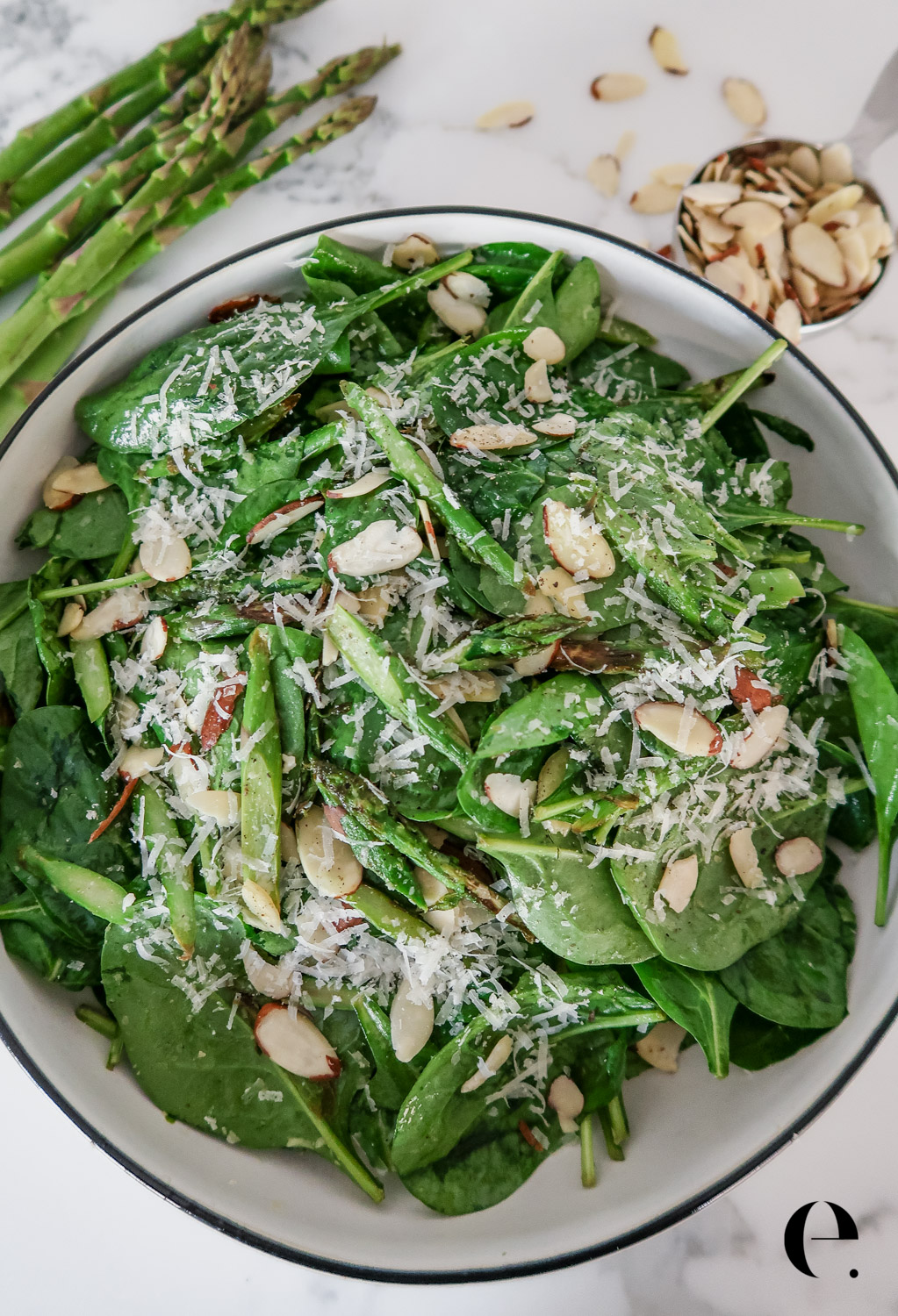
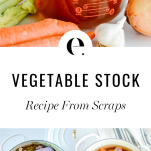

So easy and yummy. Can I put carrot peels in, or just the ends?
You can definitely put the entire carrot in, peels and all. Just be sure to scrub all the dirt off first. I don’t peel my carrots unless they are very dirty (just makes quick work of cleaning them), but if you peel yours save the peels. The peels are full of nutrients—use them!